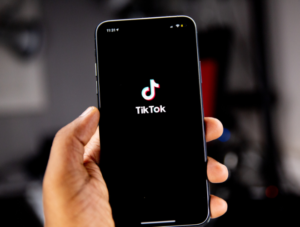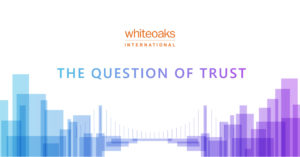What does trust mean to B2B tech brands? How is it established? How is it fostered? And what challenges are businesses facing? As part of our The Question of Trust research, we spoke to marketing professionals from a range of tech companies to get their insights and experiences.
This is what Helen Aboagye, CMO at Imagen had to say:
 Q: In your opinion, what are the components of consumer trust?
Q: In your opinion, what are the components of consumer trust?
For me, it is that you have a quality product. It needs to do what it says on the tin. It needs to be fit for purpose, and it needs to address or does what customers need it to do. It needs to address and fixes their problems and pain points. I think that’s followed by validation preferably from external sources to your company, so customer validation, industry validation, whether that be in the form of case studies, customers allowing you to use their logos, testimonials, placement in the Gartner Magic Quadrant. I think a strong brand is critical to creating consumer trust. For me, that is a brand with a clear sense of purpose and identity. This needs to be brought to life through your marketing, your people and run through the DNA of everything a company does. I’m a big believer in people buying into you as well as buying from you. Finally getting your brand out there through brand awareness activity and PR, so people can get to know your brand and see the customer’s validation for themselves. If people don’t know who you are, they don’t know whether they can trust you.
Q: In the past, how have you typically built trust?
Like many companies, we used many different strategies and tactics. It was very much a multi-pronged approach. Wherever possible we reference our customers from logos on our website to testimonial usage and written and video case studies.
With so many people doing more than half their research online before they even get in touch and want to talk to a salesperson, it is more important than ever that we create the content they need, to arm them with the information they want, so that they want to ‘pick up the phone’. Content in all its forms is important, but creating content that talks to customer pain points, right the way through to independent research and data-driven, anything data-driven I think really helps to validate trusts as well.
And finally, our salespeople and account managers create a lot of trust through the relationships they build and the knowledge they have about our product and industry.
Q: How has that changed in the last 12 months?
We’ve really focused on ramping our digital marketing side of things. We’ve put more into paid search and we have been focused on developing our pages and communities across certain review sites like G2 and Capterra. We have also taken the opportunity to rethink our internal processes. We have focused on what more we can automate when it comes to our of our marketing outreach and communication.
But specifically, we have looked at how we can find the higher intent people that are essentially in the market for a solution. Historically we have put a lot of effort into really compelling pieces of content that many people will find interesting, but they are not in the market for a solution. This helps with brand awareness but doesn’t create leads that convert.
However, what we have been doing a lot more of is utilising new marketing technologies and platforms and sites like G2 and Capterra, as I mentioned, to understand who’s in the market for a solution, and then building much more tailored outreach and personalised account-based outreach.
We have also been doing a lot more videos. Short-form videos, human, a little rough around the edges. With so many people not being able to see or have contact with others during the pandemic, video is the next best thing, and people retain a lot more information from video than they do written content.
Q: Do you think your shift in focus to digital and ABM strategies will stay?
Yes, without a doubt. I still think there is value in the way we’ve done things before, but I think everyone’s moving in this direction, and the pandemic has just accelerated this, and not just in marketing. The pandemic has also helped to blur the lines between online and physical, you just need to look at the event industry as evidence of this. So I think we’ll just see more and more of that without a doubt. Also, we’ve been able to do a lot more with a lot less. Our budgets were cut massively, but our lead numbers are in the realm of what they were when we were spending a lot more money. I think our cost per lead has come down quite dramatically with the efforts that we’ve put into digital.
Q: From a PR and marketing point of view, where do you think the biggest opportunities will lie in building trust with customers and prospects?
I think there’s a real opportunity on the PR side of things. I mentioned the need for being genuine earlier, and I think there’s a real opportunity to hear individual voices on the PR side of things over and above like corporate press releases.
Content is still king, but I think it’s the type of content that people are consuming is changing. For example, there’s a real demand for longer white papers but people are so incredibly time-poor, they just don’t always get around to reading them. I think the more you can translate your efforts of white papers into bite-sized chunks and infographics and videos and podcasts and webinars and things like that, the greater the rewards you will reap.
We’ve seen a massive increase in video marketing and people doing lots of video content that is shot from their bedroom. Webinars and online events for thousands of people are being shot from people’s attics and that’s fine. I think people are much more accepting of less professionally shot videos, you don’t need a slick corporate video anymore when you can get your CEO to record something on her or his phone. This makes your brand and company more human and will probably go a longer way to building consumer trust. All of which is great for a company like us that helps people produce and manage and them.





